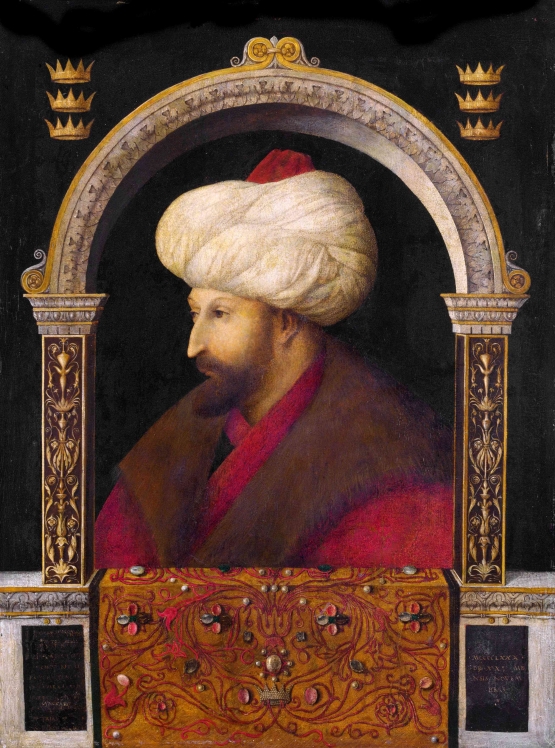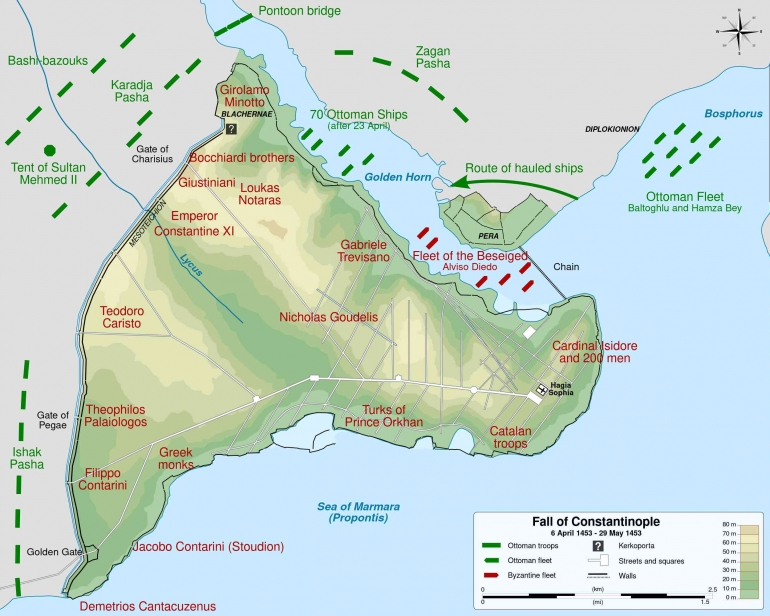The Byzantines were preoccupied with defending the Theodosian Walls, focusing all their efforts on repairing breaches and repelling Ottoman assaults. The operation was conducted at night, adding another layer of secrecy. The Ottomans' route, being distant from the city's walls, fell outside the Byzantines' line of sight. The natural cover of forests and hills further obscured the movement. Mehmed's forces executed the operation with astonishing efficiency, ensuring minimal noise and swift progress.
Moving 70--80 Ships
Historical accounts agree that the Ottomans transported approximately 70 to 80 ships overland. These were primarily light warships, chosen for their manoeuvrability and ease of transport. The operation required advanced preparation, including greased logs for rolling the ships and pulleys for uphill movement. Thousands of workers, soldiers, and engineers worked in perfect coordination, completing the operation in just one to two nights.
The purpose of the fleet was clear: to establish naval dominance in the Golden Horn, cut off Byzantine supply routes, and apply pressure on the city's harbour-side walls. These ships were lightly armed, as their role was primarily strategic rather than offensive.

An Unprecedented Achievement
The scale of the operation was staggering. Transporting an entire fleet overland was an unprecedented feat in military history. Mehmed's strategic brilliance turned the tide of the siege, symbolizing the Ottomans' unyielding determination.
For the Byzantines, the sight of Ottoman ships in the Golden Horn was a devastating blow. Their impenetrable chain, which had protected them for centuries, was rendered useless. The operation tightened the Ottoman stranglehold, forcing the Byzantines to split their defences.
Constantine XI's Heroic Stand
After weeks of relentless pressure, the Ottomans launched their final assault on May 29, 1453. Exploiting breaches in the Theodosian Walls, the elite Janissaries stormed the city. Emperor Constantine XI Palaiologos, the last Byzantine ruler, fought valiantly to the end. Refusing to surrender, he joined his soldiers in a final charge near the Gate of St. Romanus and was killed in the melee, becoming a symbol of heroic martyrdom.
Istanbul
With the fall of Constantinople, Mehmed II fulfilled his ambition to capture the city, a goal driven by strategic necessity, religious motivation, and personal ambition. He renamed it Istanbul, derived from the Greek phrase "eis ten polin" ("to the city"), though Constantinople remained in international usage until the early 20th century. Mehmed transformed the city into the capital of the Ottoman Empire, blending its Byzantine heritage with Islamic culture.

Follow Instagram @kompasianacom juga Tiktok @kompasiana biar nggak ketinggalan event seru komunitas dan tips dapat cuan dari Kompasiana. Baca juga cerita inspiratif langsung dari smartphone kamu dengan bergabung di WhatsApp Channel Kompasiana di SINI











